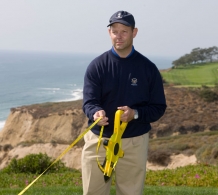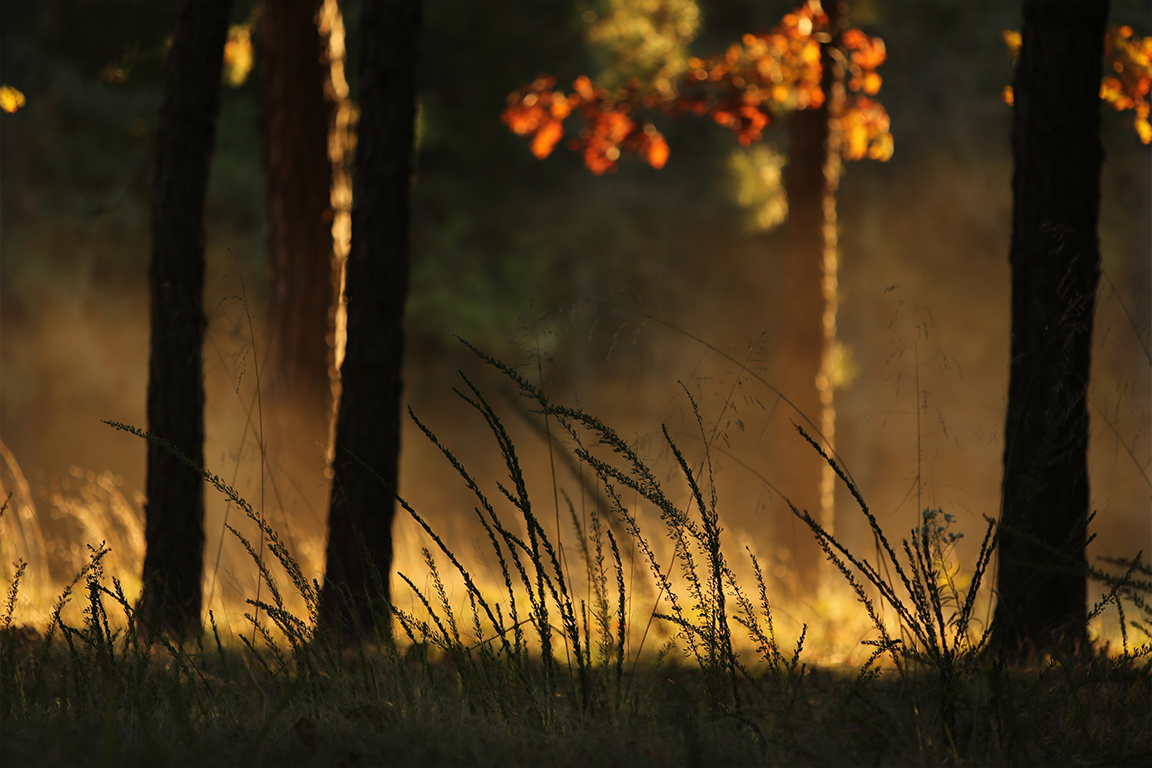Rules Interviews Part 2
Q: Dick, can you take us through the process of how the 2010 condition of competition on grooves came about?
Rugge: It started with Arnold Palmer, who came here to the USGA offices in January 2001 for a meeting to talk about a lot of things regarding equipment. He sat next to me, and near the end of our meeting, he stuck his finger in my face and kind of scolded me and said, “The biggest mistake the USGA ever made was to allow square grooves in the game.” That’s how it started. And honestly, and I didn’t believe that was true at the time, and I found myself starting to debate him…and quickly stopped myself from doing so. I mean, this was Arnold Palmer! It was the first time I’d met him, and I just said, “Mr. Palmer, we will investigate that further.”

His hypothesis was that, because the players could hit such good shots out of the rough, they didn’t care if they got in the rough. They didn’t care so much about driving accuracy. I said we’d investigate that, and we did. And our investigations did show that the relationship between driving accuracy and winning, which used to be a tight relationship, had deteriorated into a very weak relationship.
Golf is a game that relies on a player’s broad and deep set of skills, and as you let the need for some of those skills erode, you’re making the game less challenging. And one of our main missions here is to maintain the challenge of the game. The game is played because it’s a challenge, not because it’s easy. And that’s why we keep coming back — it always presents challenges. And as we let erosion happen, it becomes less challenging and could conceivably make the game less interesting. As stewards of the game, it’s important for us to maintain that.
Q: In terms of testing here and elsewhere, how many years did this take?
Rugge: The project didn’t go at full speed until 2004 or 2005. That’s when we said, there really is something here and we have to apply more effort to this. So from that period on, we informed manufacturers that we were working on it. And we sought to really understand how the changes in grooves affected performance, in this case spin performance out of the rough. And that’s where grooves do their work. They don’t do their work in the fairway. You barely need grooves in the fairway, but in the rough they’re important. They work like the tread on tires…they get rid of the water and debris that get trapped between the ball and the club during a hit out of the rough. The grooves give the water and debris a place to go and channel them away from the ball. The larger the groove, the bigger the pipe if you will, and the more that can get channeled away.
Q: Just a few months in here, are you pleased with the impact the Rules change has had?
A: Too early to tell. I’m pleased that it’s been relatively smooth, and we were at events on all Tours through the fall with the measuring equipment, and the pros got very familiar with that and got to know whether their clubs were okay or not, well before January 1 [when it went into effect]. When it didn’t matter back then, they were able to do it in a calm manner. When January came, it was old news. So that part went quite nicely. And the manufacturers have been very good about getting their players up to speed.
Q: Mike, when you set up a course for a USGA championship, what are the main thoughts you have in mind as far as the Rules?
Davis: For the golf course setup itself, there probably aren’t a lot of things I would think about as far as a pure Rules standpoint. But there are certain things you try to guard against. For instance, if you’re on a particularly windy golf course, like Pebble Beach has the potential to be for this year’s U.S. Open, you want to make sure greens don’t get too fast and then all of a sudden balls start to roll and players have trouble addressing the ball before they putt, which causes Rules problems. Another thing might be, if you happen to have shaved banks near water hazards, particularly lateral water hazards where the player is trying to take relief, and he drops and can’t get his ball to stay in place within two club lengths, it only complicates things.
 One place where I do give the Rules a lot of thought is in the placement of grandstands, especially in the U.S. Open. I’m very particular about that, and also about the placement of tents. Because while you can’t eliminate all the Rules problems with respect to these temporary immovable obstructions, you try to do your best to say, okay, where can we get these things to where they’re going to be in play the least amount of time.
One place where I do give the Rules a lot of thought is in the placement of grandstands, especially in the U.S. Open. I’m very particular about that, and also about the placement of tents. Because while you can’t eliminate all the Rules problems with respect to these temporary immovable obstructions, you try to do your best to say, okay, where can we get these things to where they’re going to be in play the least amount of time.
Q: So is it fair to say that there are some instances where you’d like to do something to a golf course in terms of maintenance or setup but reconsider if you think it’s going to cause a Rules problem?
A: Yes, that’s exactly right. And that happens more than you think. For instance, at Torrey Pines a couple years ago for the U.S. Open, there were a couple greens up against the ravine that we marked as a hazard, and the banks were closely mown, and we wanted them that way, because we wanted a player, if he missed the green on that side, we wanted the balls to roll into the hazard. And that was part of the architectural intent. But we had to think through it and say, okay if they do that and drop it, and then re-drop it, and then try to place it, and they can’t even get it to stay in place, then we say, you know, that’s not a problem worth having. We can solve it with slightly longer grass.
Q: Looking ahead to Pebble Beach, is there anything specific from a Rules standpoint that might be a challenge?
Davis: Well, I wouldn’t say a challenge, but there are some things about Pebble Beach that we don’t see many other places. For instance, the 18th hole at Pebble has that long bunker on the left side starting at about 100 yards short of the green, and the bunker is right up against the lateral hazard. So you have this scenario that if a ball ends up going into the hazard and last crosses the line where the bunker is, you can have players dropping a ball, already taking a one-stroke penalty, and now having to drop in a hazard. So we’ll end up giving them an additional option of going to a drop zone outside the bunker, not nearer the hole.
On the 8th hole, where players hit their second shot over that cliffside ravine to the green, we mark that as a regular water hazard rather than a lateral, even though technically there are many places where a player can cross the hazard and have the ball roll back in. But we feel that we don’t necessarily want players who didn’t negotiate that hazard to just drop up near the green, which they’d be able to do if it was marked with red stakes, so we put a drop zone right before the ravine.
Q: Obviously there is a huge difference between today’s drivers and the size of the first models of metal drivers in 1979, and even ones from the late 1990s. How did the USGA arrive at the 460cc clubhead limit?
Rugge: It was the size of the largest club that we had already approved. When we woke up and realized we had to put a limit on head size, and we had already approved clubs of that size, and that became the limit. That was the precedent, basically. If we had thought about it sooner, we would have had a smaller limit. But we didn’t.
Q: Now that drivers can’t get any bigger, what is the next frontier for manufacturers as far as driver performance is concerned?
Rugge: It’s a frontier that we’ve opened the door for them on, specifically to give them something to work on, and give golfers something to benefit from, and that’s adjustability. Before two years ago, clubs were not allowed to be adjustable except for weight, and we removed that rule from the rule book specifically to allow manufacturers to create products and for golfers to buy products that would help them fit clubs to their own personal swings. And I think they’re just getting going on that, and that’s going to be an interesting area in the future. There have been several generations of clubs already coming out along those lines, and they’re the leading clubs on Tour and probably the leading sellers as well. So we don’t always clamp the door closed, we open things up in other areas as well.
Q: In your years of being out in the field and being called to make a ruling out on the golf course, can you point to a Rule that is the most misunderstood amongst the players? Anything that you’ve given a ruling on more than anything else?
Davis: I’ll change the question just slightly. One of the things I’ve found over the years is that there are a lot of people who are pretty good with the rules, and so much of being a good on-course official is really just how your interaction is with the player. I think the first thing you want to do is try to calm the situation. Because typically when you get called in for a ruling, the player is a bit tense about it or they’re not happy about what’s happened, so you want to approach it in such a way that you’re there to help them. Then, in some sense it’s kind of like a prosecuting attorney trying a case. You’re trying to ask enough questions to find out all the facts. You truly can give an answer to a question, and that is something that is learned over time, in terms of how best to officiate.
Back to your question, I would say that the most misunderstood rule depends on what groups of golfers you’re talking about. At a high level, players understand basic rules like how to take relief from a water hazard, or what to do if a ball is embedded, but I think beyond that, for the average golfer who’s not competitive, it’s amazing how many don’t know the difference between a red line/red stake vs. a yellow line/yellow stake. Or who’s allowed to lift a golf ball. Boy, I could go on and on, but I’m always amazed at people who play a good bit of golf, maybe not competitively, how much they truly don’t know about the basics of the game. And I’m further amazed that those who play the game for a living, at least some of them have the view that, well, I don’t need to be good with the rules, because that’s why we have rules officials out in the field. And as long as I do everything the rules official tells me to do, I can’t get in trouble. And to some extent, there’s truth to that. But on the flip side, if you’re not good with the rules, you don’t even know when you need help, or might not know when you’re entitled to relief, or might not know that you’re about to breach a rule. So I think that if you’re going to play the game for a livelihood, you would think somewhere in their career they’d say, let me take a couple days and just go learn the basics. If they come to one of these USGA seminars or even something put on by the PGA Tour, they’re going to learn enough to deal with the vast majority of situations they encounter.
